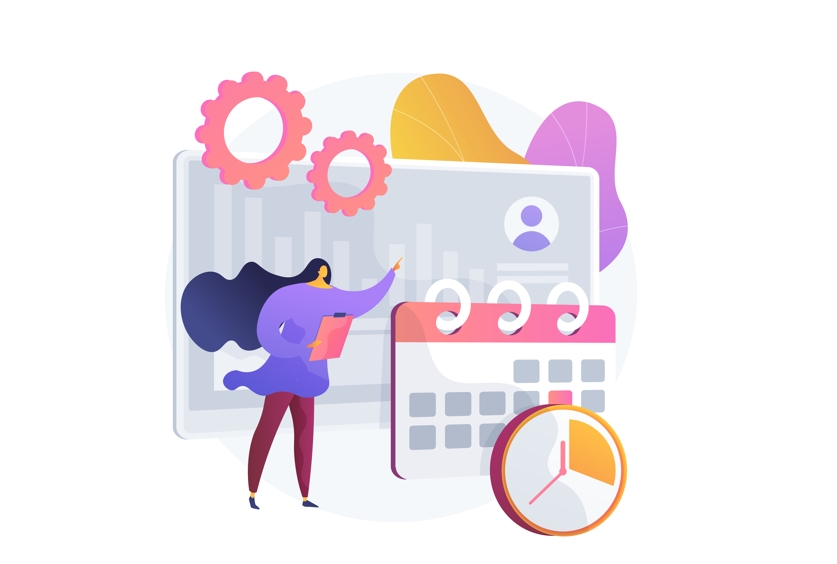Electronic attendance systems come with a variety of conveniences when managing employee attendance. If your company currently still manages your employees using excel sheets, then it’s time for your company to make a change.
Dokodemo-Kerja is currently the best online attendance application in circulation, applying a full range of features used to flexibly increase overall employee productivity.Some of these features include Attendance & Leave Management, Task Organization, as well as Employee performance evaluation: all through just one application.
Manage Employees Easier through the Dokodemo-Kerja HRD Application. Try it now!
It is currently 2021, and technology is only becoming more advanced. Nowadays, many companies allow their employees to work flexibly through the use of remote systems (WFH). If your company is still using more manual methods in managing employee attendance, your HRD team may encounter some difficulty tracking employee delays, leaves, and so on.
In order to avoid these things, we will provide some tips for managing employee attendance through the use of electronic attendance systems, such as Dokodemo-Kerja.
Table of Contents
Tips for Managing Employees through Electronic Attendance Systems
1. Clearly define rules and policies
In general, electronic attendance strategies can be utilized through the use of devices, be it smartphones or laptops. Even though employees don’t have to be present at the office in order to record their attendance, that doesn’t mean that they are free from regulations.
The HRD and the company’s management team must state their policies clearly. Some examples include defining your employees’ starting hours, determining the core times when employees must be online, determining the total daily working hours, and so on. This way, even if employees do not show up for work, they will still be bound to the rules that have been set so that discipline can be maintained properly.
Electronic attendance systems in general also utilize reporting tools. So, the HRD team can monitor and give warnings to certain employees if they do not comply with the rules that have been set.
2. Offer flexibility
As previously mentioned, in 2021 more and more companies are offering more flexible working schemes. This is also done in order to support a good work life balance for employees.
To do so effectively, companies can take advantage of electronic attendance systems, which can record the activities of its users (in this case, the company’s employees). The system knows what time employees start working, what time employees take breaks, and knows the total daily number of working hours they put in, among a variety of other functions.
Through this information, the HR team can offer work flexibility to employees. For example, through the system it is known that employees are more productive at night than during the day, based on this information, the HRD team can offer shift work hours to work night time hours for employees.
Even though the company allows for more flexibility, employees must understand that the company has regulations that must be adhered to, one example is meeting the total number of daily working hours.
Read Also: Types of HRIS Software You Need to Know
An advanced HRIS system that effectively monitors the performances and productivity of your employees. WFO or WFH? Manage both and Stay Productive with Dokodemo-Kerja!
An affordable HRIS app that increases productivity. Check it out here!
3. Empower employees through electronic attendance
Currently, it is likely that the majority of the global workforce is dominated by the millennial generation or Gen Z who are very familiar with technology. Therefore, you can empower employees through the use of electronic attendance tools.
Electronic attendance such as Dokodemo-kerja offers self service capabilities for its employees. This means that employees can perform basic HR functions independently such as checking reports regarding their attendance, total hours worked, and finding out their remaining available leave days. Thus, employees can have a greater sense of responsibility and will be motivated to be more disciplined.
4. Solve serious employee attendance problems
Once your company implements electronic attendance strategies, your company can then recognize serious problems related to your employee’s attendance records. Through this information, the HRD team and company management can then make the necessary improvements.
When solving such problems, try to understand the reasons behind them. Discuss with your employees in order to create a win-win situation. Remember, open communication provides the most effective basis for improvement. In addition, try to convey company policies regularly, communicating them with employees about the impact of absenteeism or tardiness.
For example, through the electronic attendance system it was known that an employee was regularly late, starting work at 10 in the morning. After going through the discussion process, it was discovered that the employee had insomnia which made it difficult for the employee to sleep. Based on this information, the HRD team had offered solutions, for example, by providing a working hour policy that allowed him to start work at 10 am.
Through the use of electronic attendance systems, both the company and employee alike will benefit equally. In this digital era, employees can benefit from being able to work flexibly. On the other hand, companies can also benefit from better productivity and employee discipline.
So, are you interested in switching to electronic attendance strategies?







